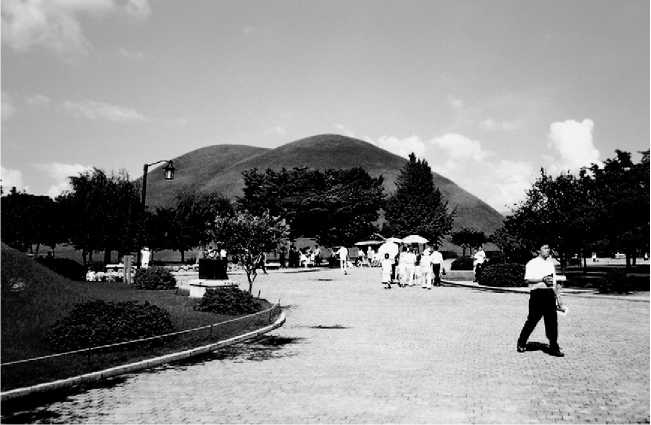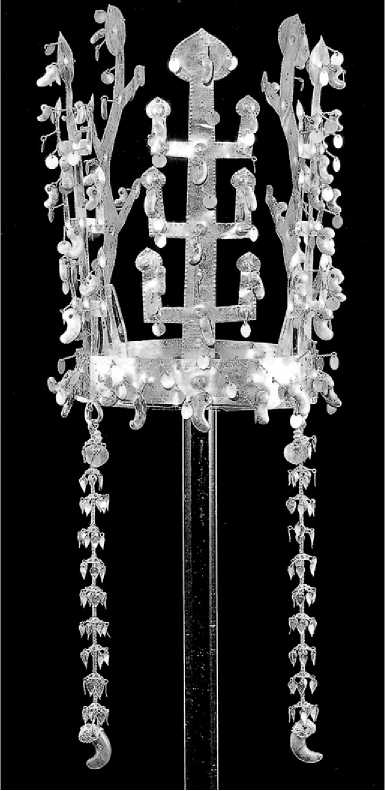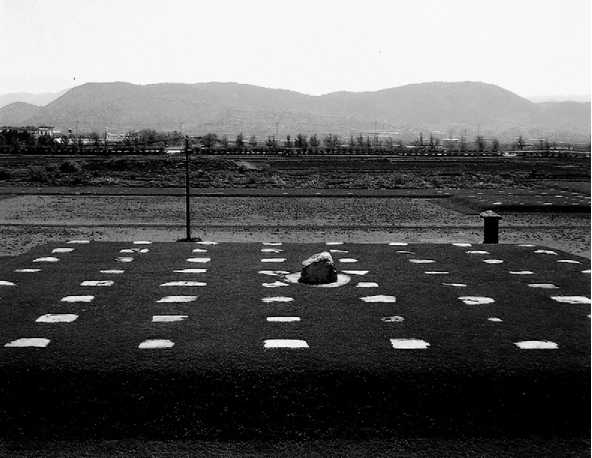Archaeology in the Korean Peninsula (and Manchuria) was introduced by Japan after its victory in the Sino-Japanese war of 1894-95, and intensified after victory in the Russo-Japanese war of 1904-05. In the course of annexing and finally colonizing the Peninsula in 1910, much anthropological, archaeological, ethnological, and historical work was carried out, aimed at manifesting the Japanese ancestral claim to this territory. Interaction between the polities of Koguryo, Paekche, Silla, and Kaya on the Peninsula during the Proto-Three Kingdoms period (c. first-century BCE-CE 300) and then between these states and Yamato/Wa, the dominant kingdom on Japan during the Three Kingdoms period (c. 300-668), led each to develop increasingly complex forms of organization. Japanese imperialist goals supported the idea that Japanese influence on the Peninsula was responsible for the kingdoms developing into complex states. Much archaeological effort was expended by Japanese scholars in the colonial period to prove this theory, and then by Korean scholars in the postcolonial period to disprove it. Nevertheless, Japanese Researchers were responsible for many major excavations and surveys on the Peninsula where fieldwork and documentation set a standard for scholars following them. Japanese investigations include Torii Ryuzo’s 1905 excavation at a Koguryo hill fort in the Tonggou, Ji’an region on the Yalu (Ch)/Amnok (Kr) River (now in Jilin Province, China), and his 1911 survey of the third Koguryo capital at Pyongyang. Other scholars conducted excavations at Wunushan (Ch)/Onyeosan (Kr), the first Koguryo capital (now in Liaoning Province, China), and in 1911 at the Koguryo tombs in the Pyongyang region. There was also meticulous excavation and documentation of the tombs at Lelang (Ch)/Nangnang (Kr), a Pyongyang region commandery established by the Han Dynasty in 108 BCE and lasting until 313. In the south, many other important Silla, Paekche, and Kaya remains were also unearthed, and by the end of colonial rule, over 2000 sites had been recorded and several hundred dug. While colonial-period archaeology aimed to further Japan’s imperialistic goals, it did record and preserve many sites which otherwise would have remained undocumented.
After colonization ended in 1945, Korea’s intellectuals largely subscribed to a nationalist historiography and aimed to use historical, archaeological, and anthropological data to demonstrate Korean identity, purity, and state legitimacy since antiquity. With the North-South split imposed on Korea in 1945, archaeology in the DPRK North and ROK South has followed different theoretical orientations, but both were still conducted in line with nationalist historiographical goals.
South Korean Three Kingdoms period archaeology has focused on Paekche and Silla simply because most Koguryo ruins are in the DPRK. While both North and South agree that the Three Kingdom period states are ancestral to Korea, their restricted access to predominantly Koguryo remains in the North and Silla remains in the South has resulted in differing interpretations as to which state was more important for the formation of modern Korea. Unified Silla (668935) has also been an extremely important focus of research. Important ongoing excavations are being done at the pre-Silla (Saro), Silla, and Unified Silla period capital at Kyongju in southeast Korea. They have included excavations of several royal and noble tombs, which were not looted due to their construction; the burial chambers are covered by large mounds of boulders capped with earth (Figure 6). Several gold crowns and belts have been recovered here, as well as a painting of a flying white horse on a birch bark mudguard (Figure 7). A gridded city based on Chinese models was laid out in the seventh century, just north of the earlier settlement at the

Figure 6 Sillatomb park, Kyongju, Korea.

Figure 7 Gold crown recovered from excavations of royal Silla tomb, Kyongju, Korea.
Asymmetrical, walled Panwolsong. Within the gridded city the foundation stones of several large buildings all conform to the grid layout (Figure 8). To the northeast lies the Anapchi Garden Pond, where excavations have contributed many unexpected objects, including wooden slips with writing, that have rounded out the picture of life at the Silla court. The Kyongju capital region is a World Heritage Park.
Paekche period archaeology is more limited than Silla because of the destruction that followed its many battles with Koguryo, Silla, and Tang China. This period’s architecture is best known from Japan, where many Paekche artisans were sent to practice their craft. Paekche horizontal chamber tombs were easily looted, but tomb styles were not unified. Square or keyhole-shaped mounded tombs were common in Kofun period Japan (c. 300-710), but the numerous early examples in the southwestern Korean Peninsula suggest this may be where this style of burial originated. The unlooted royal Paekche tomb of King Muryong and his queen was discovered in 1971, and contained gold floral ornaments that were described in the Chinese text, the Old Tang History (Jiu Tang Shu).
Koryo Dynasty (918-1392) prominence in East Asian celadon porcelain production has directed much archaeology towards excavations of several Koryo period porcelain kilns in Cholla Province, especially at Kangjin and Puan and along the southeast coast. Another important project has been the excavation and reconstruction of the Choson period (1392-1910) walled fort at Suwan, an excellent, complete example oF this type of construction and now a World Heritage site.

Figure 8 Foundation stones of Silla period Hwangyongsa Temple, Kyongju, Korea.
North Korean efforts have focused on the numerous Koguryo, Koryo, and Choson dynasty remains in the Pyongyang and Kaesong regions. Excavations include Koguryo tombs and remains of its third walled capital in Pyongyang, along with tombs from the Lelang/ Nangnang Commandery. Tombs from both periods contain numerous wall murals showing a mixture of Chinese and indigenous influence and have provided much information for the relationship between China and people on the Peninsula. Koryo royal tombs near Kaesong have also undergone excavation.




 World History
World History









